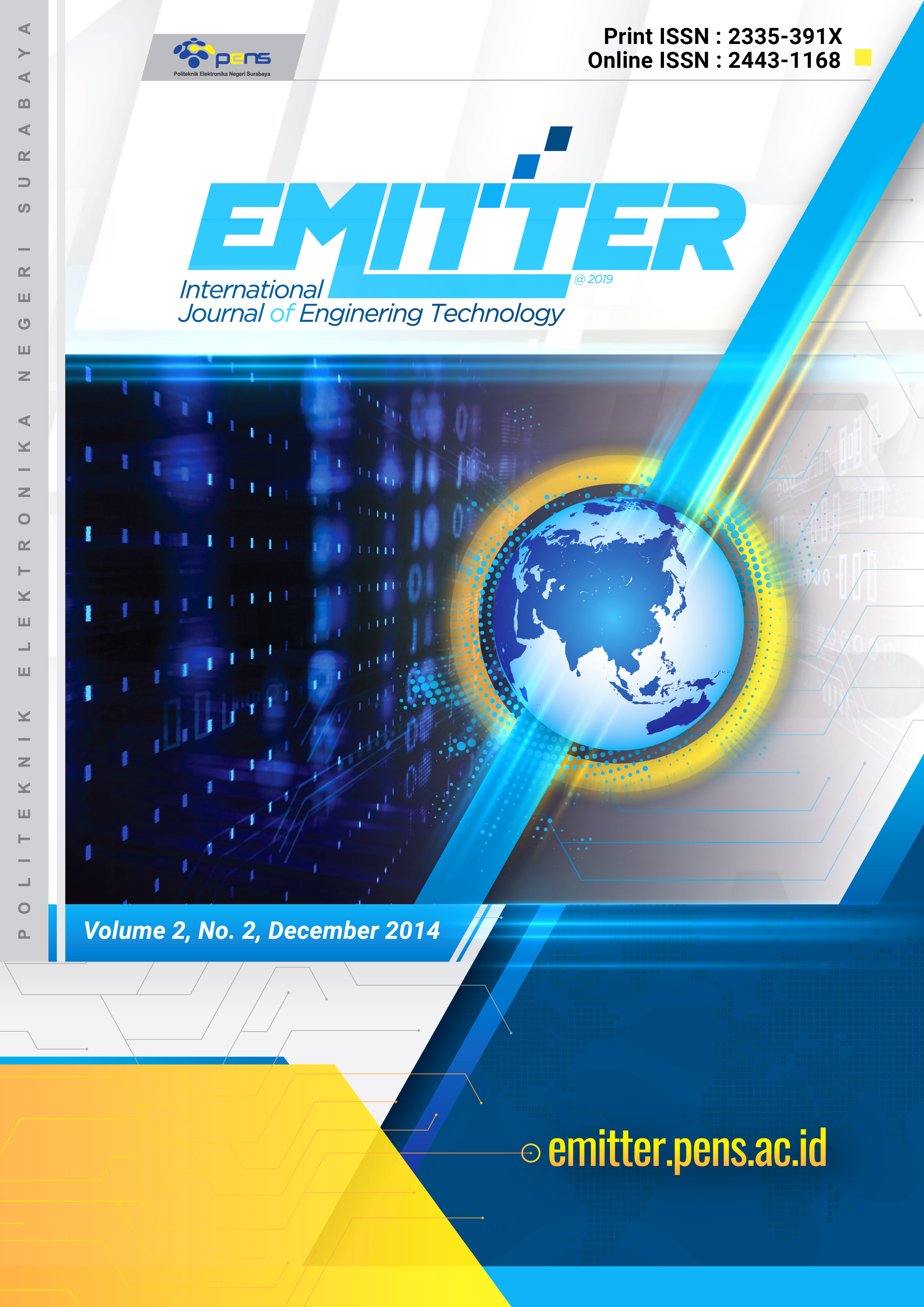Internet Connection Control based on Idle Time Using User Behavior Pattern Analysis
Abstract
The increase of smartphone ability is rapidly increasing the power consumption. Many methods have been proposed to reduce smartphone power consumption. Most of these methods use the internet connection control based on the availability of the battery power level regardless of when and where a waste of energy occurs. This paper proposes a new approach to control the internet connection based on idle time using user behavior pattern analysis. User behavior patterns are used to predict idle time duration. Internet connection control performed during idle time. During idle time internet connection periodically switched on and off by a certain time interval. This method effectively reduces a waste of energy. Control of the internet connection does not interfere the user because it is implemented on idle time.
Keywords: Smartphone, User Behavior, Pattern Recognition, Idle Time, Internet Connection Control
Downloads
References
Zhang. L, B. Tiwana, R. P. Dick, Z. Qian, Z. M. Mao, Z. Wang, and L. Yang. 2010. Accurate Online Power Estimation and Automatic Battery Behavior Based Power Model Generation for Smartphones. Hardware/Software Codesign and System Synthesis: 105–114.
Zahid, I. M. A. Ali, and R. Nassr. 2011. Android Smartphone: Battery Saving Service. Research and Innovation in Information Systems: 1–4.
Khairy, A., H. H. Ammar, and R. Bahgat. 2013. Smartphone Energizer: Extending Smartphone's Battery Life with Smart Offloading. International Wireless Communications and Mobile Computing Conference: 329–336.
Kim, M. W., D. G. Yun, J. M. Lee, and S. G. Choi. 2012. Battery Life Time Extension Method Using Selective Data Reception on Smartphone. International Conference of Information Networking: 468–471.
Hyeon, Y., M. W. Kim, J. M. Lee, and S. G. Choi. 2012. Battery Life Time Extension Method by Using Signalling Interval Control. International Conference Advanced Communication Technology: 327–330.
Kang, J. M., S. S. Seo, and J. W.â€K. Hong. 2011. Usage Pattern Analisys of Smartphones. Network Operations and Management Symposium: 1–8.
Noulas, A., S. Scellato., C. Mascolo., M. Pontil. 2011. An Empirical Study of Geographic User Activity Patterns in Foursquare. Association for the Advancement of Artificial Intelligence: 570â€573.
Farrahi, K., Daniel, G. 2008. Daily Routine Classification from Mobile Phone. Machine Learning for Multimodal Interaction: 173–184.
The copyright to this article is transferred to Politeknik Elektronika Negeri Surabaya(PENS) if and when the article is accepted for publication. The undersigned hereby transfers any and all rights in and to the paper including without limitation all copyrights to PENS. The undersigned hereby represents and warrants that the paper is original and that he/she is the author of the paper, except for material that is clearly identified as to its original source, with permission notices from the copyright owners where required. The undersigned represents that he/she has the power and authority to make and execute this assignment. The copyright transfer form can be downloaded here .
The corresponding author signs for and accepts responsibility for releasing this material on behalf of any and all co-authors. This agreement is to be signed by at least one of the authors who have obtained the assent of the co-author(s) where applicable. After submission of this agreement signed by the corresponding author, changes of authorship or in the order of the authors listed will not be accepted.
Retained Rights/Terms and Conditions
- Authors retain all proprietary rights in any process, procedure, or article of manufacture described in the Work.
- Authors may reproduce or authorize others to reproduce the work or derivative works for the author’s personal use or company use, provided that the source and the copyright notice of Politeknik Elektronika Negeri Surabaya (PENS) publisher are indicated.
- Authors are allowed to use and reuse their articles under the same CC-BY-NC-SA license as third parties.
- Third-parties are allowed to share and adapt the publication work for all non-commercial purposes and if they remix, transform, or build upon the material, they must distribute under the same license as the original.
Plagiarism Check
To avoid plagiarism activities, the manuscript will be checked twice by the Editorial Board of the EMITTER International Journal of Engineering Technology (EMITTER Journal) using iThenticate Plagiarism Checker and the CrossCheck plagiarism screening service. The similarity score of a manuscript has should be less than 25%. The manuscript that plagiarizes another author’s work or author's own will be rejected by EMITTER Journal.
Authors are expected to comply with EMITTER Journal's plagiarism rules by downloading and signing the plagiarism declaration form here and resubmitting the form, along with the copyright transfer form via online submission.



